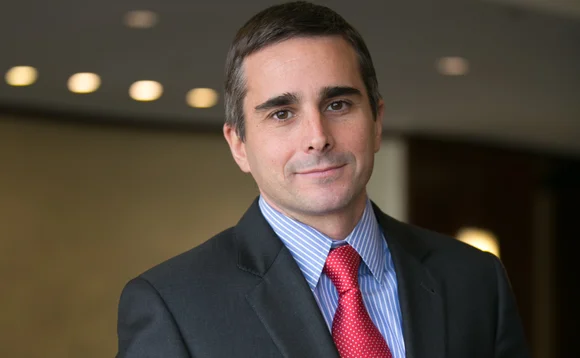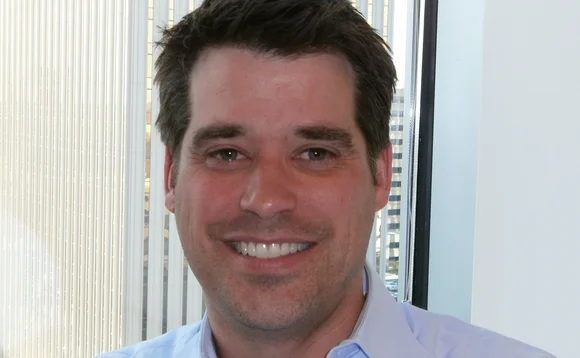Wanted: Young, Talented Technologists
Dan DeFrancesco talks to folks around the industry about talent acquisition.









Meet Krithika Yetchina.
The 15-year-old San Jose, Calif.-native is a self-described hackathon enthusiast. After attending her first hackathon as a seventh grader, Yetchina was hooked, eventually judging and organizing the technology-driven events.
This summer she's interning at AngelHack, an organizer of hackathons across the globe, in addition to being a project manager for Code for India, a non-profit organization that builds applications aimed at helping poor communities solve public service problems.
More than just a pure coder, Yetchina speaks Telugu, Spanish, and has elementary Japanese. She's also a varsity wrestler at Lynbrook High School.
But why is the background of a young developer relevant to readers of a magazine specializing in trading technologies for the capital markets? Yetchina and her peers might be the most valuable resource for the capital markets right now.
"The war for technical talent continues to rage globally. Being a ‘best place to work' for top technical talent is paramount to an IT organization's success." Lisa McCann, Vanguard
"I think 20 years ago financial services was the cool place to work for technologists. We spent the most. When I was in college, it was seen as where I wanted to go," said Bill Murphy, chief technology officer at New York-based Blackstone, at a recent Waters event. "Now it's absolutely not the case that anybody wants to go (into financial services). It's a bit of a brand problem."
Valuable Assets
People like Yetchina have significant worth to investment banks and asset managers, as the war for talent among those in the technology field is stronger than ever. Capital markets firms are not only fighting against each other, but against other industries too, as most companies can benefit from a young, talented coder.
"The war for technical talent continues to rage globally. Being a ‘best place to work' for top technical talent is paramount to an IT organization's success," says Lisa McCann, principal of IT for buy-side giant Vanguard. "We have initiatives underway to continue to improve technical roles and focus on technical career pathing and talent management."
It's not just exciting, sexy companies like Google and Facebook that buy-side and sell-side firms are competing against. Youngsters are just as likely to develop their own business nowadays.
"I want to go into entrepreneurship, ditch college altogether and start up my own company right after I get my diploma," Yetchina says.
Even if Yetchina does end up taking a more traditional route and going to a four-year school because of "parents and stuff," the chances of her developing a trading platform or risk analysis solution are slim. While she won't rule out financial services, she says her passion lies in working on real-world applications that could be in the hands of every person every day.
"I feel like someone my age is more likely to work at Snapchat versus Bank of America," she says. "How many kids use Snapchat versus Bank of America?"
Rise in Demand
To be fair, it's not as if there was ever an easy time for acquiring young technologists. Kara Ayers, technology recruiting manager for Wells Fargo, says firms have always felt a bit of a squeeze on the available technology labor force. Ayers says the difference now is around whom the firms are competing against. A shift by new graduates heading to technology, consulting, and management consulting firms has taken place over the past few years.
Most companies in the world have websites, and many have dedicated apps, meaning there is a need for technologists in every field. Designers and programmers can apply their craft to essentially every firm, as coding knows no bounds. Other industries now recognize that having strong programmers on the staff can only mean good things for the future of their company. The result is a lack of interest in what used to be a major landing spot for young techies.
"I think that the mainstream that is financial services is not the place to go if you're a great technologist right now, and that's a shame," explained Murphy at the Waters event in April. "We're losing not only to other financial firms, but to healthcare start-ups, the Googles of the world and all kinds of different things, because those [technology] skills are extremely transferable across the economy and everybody realizes that they need those people."
Increase in Quality
Demand has increased for young programmers, but that's not the only reason they are valuable. Nearly everyone agrees that the quality of work from up-and-coming technologists has greatly increased.
Bryan Berger, a freelance designer who runs NY Hackathons, a website which aggregates details on hackathons in New York, says high-school kids are now far more advanced than he was at their age. Berger, 28, who worked on interface design and the new products team for internet and media giant IAC before leaving to freelance in August 2014, says kids are benefiting from learning programming skills at an early age.
"They can really put together a whole website or a whole app. They're learning Python, Ruby on Rails. These are full frameworks on which you can build a desktop app, a website, an iPhone app or an Android app," Berger says. "They are learning skills that can be courted all over the internet and all over physical devices."
Brad Levy, head of Markit's processing division, says having grown up with the ability to learn programming languages and technologies has put this crop of talent far ahead of past generations. While older generations can try their best to keep up with the current technologies, they will seemingly always be a step behind the current generation, who was born into it.
"The millennials is really the first generation that is digitally native; they just don't know any other way," Levy says. "I, as part of Gen X, and the Boomers and the Greatest Generation, we are all versions of an immigrant. We just don't get it. Now some of us will get it enough to at least play a role on TV and attract those people to our firms, but we're still immigrants. You can still never fully be the person who never knew any different."
Adapt and Evolve
Kim Tran knows a thing or two about talent acquisition.
Tran has worked in human resources for big and small firms, spending time with five successful start-ups and tech giants Cisco and Google, considered by many the gold standard of talent acquisition. She is the chief officer of IT, people and ops at Symphony, a Palo Alto-based financial communications start-up backed by a number of capital markets firms, including Goldman Sachs, Citadel, BlackRock, and Bank of America.
Since joining Symphony in mid-January, Tran has helped grow the company from 40 employees to 110, the majority of whom are technology-based. For Tran, firms on Wall Street can only blame themselves for not getting the best and brightest in technology.
"They still rest on their laurels. They feel like, well, we're X company, and everybody knows we're a financial institution," she says. "It's not about the fact that they aren't sexy enough. It's neither here nor there. It's the way they still internally do their process that is killing them, because they are still thinking mammoth-like."
While other industries have evolved, adopting new techniques to recruit young talents, Tran says many financial services firms haven't done so, making a comparison to Cyndi Lauper and Madonna. Both megastars in the '80s, one was able to adapt to the changing times and stay relevant (Madonna), while the other wasn't (Lauper).
As an example, Tran cited a conversation she had with an executive at a large bank. When the topic of recruitment of technology personnel came up, the executive told Tran their hiring cycle was 90 days. Tran balked.
"I was like, what the hell are you doing? There is no way you're going to land anyone," Tran says. "Out of 10 people you interview, you lost about eight by the time you're done with your cycle. And she said yes ... and the other two are the lowest people in your barrel. Then when you see the price tag you almost faint, and she said yes again. Now you're trying to convince yourself that these are the best choices, and before you know it one of them gets swooped away by someone else, so now you're left with one, and you're lucky if you land them. Now you're frustrated because you literally had a village to recruit these 10 people and you could have had eight but you don't because of what you're doing."
Trying Times
It's not for lack of trying, however. Berger says the hackathons he attends usually have more recruiters than attendees. When he initially launched NY Hackathons, he was inundated with so many emails from recruiters he had to set up a separate email account.
The sheer number of recruiters isn't what bothers Berger as much as the way they go about doing business. He says that initial emails are often generic and lack a personal touch, as recruiters try and cast a wide net, reaching as many people as possible. Information is sometimes vague, leaving out specific details about the job spec or company.
And when it comes to capital markets firms, Berger echoes Tran's point on companies' unwillingness to change.
"I think the financial services industry still believes that everybody needs to work for them, that they're the only one on the block," Berger says. "That's the worst mentality to have right now, because it's really not the case. It is incredible how many opportunities these students have, and they can also make their own."
If the capital markets are able to swing back in the favor of young technologists, it won't be because of one change, though. Markit's Levy says for a firm to attract younger talent it isn't a matter of making a single adjustment to the organization.
"There is no silver bullet," he says. "A lot of these senior guys that you're talking to are trying to find the one thing that they can do and move on. It's not that simple. I'm a believer in lots of small things over time as opposed to one big thing that saves the day."
Making Strides
Not all firms refuse to alter the way they do things, however. Jason Griffin, a technology talent acquisition manager at Wells Fargo, says one way the bank has adjusted their recruitment of technologists is by getting managers involved earlier in the process. Having a potential employee talk to someone who is actually in the weeds, as opposed to a recruiter, can sometimes make all the difference.
"To have one technologist talk to another technologist, I think that's where we're able to break those stigmas," Griffin says. "We're putting them in touch with the right people at the right time, earlier in the process."
Joseph Squeri, Citadel's chief information officer, says it's a matter of showing the type of environment at the firm. The competitive nature that thrives at Citadel and the way in which employees are instructed to tackle problems makes it an appealing place to work, according to Squeri.
With 1,300 people at the firm, Squeri says Citadel is in the sweet spot of being not too big or too small. Despite having more than $26 billion in assets under management and celebrating their 25th anniversary this year, Squeri considers them a start-up in their own right.
"Our teams are empowered to innovate and solve complex problems. This has been key to attracting young, driven professionals. This is what they look for in a successful organization," Squeri says. "We're a meritocracy, and we constantly encourage each other to achieve more. We've been successful because we rise to the challenge. We want to compete and we want to win."
Still Hope
While the status quo might paint a dark picture for the future of technology in financial services, all is not lost. There are those who still have an attraction to the world of fintech.
Daniel Barrett and Pranit Jankoli, a junior developer and junior software developer, respectively, at Boston-based buy-side technology provider Eze Software Group, were both hired within the past two years and both see big benefits in working on technology that's used in financial services. Since firms are constantly looking to stay on the cutting edge of an ever-changing market, fintech is a great space to be in for a young, hungry developer.
"There are a lot of exciting things going on in payments, investment finance and crypto-currency. There is a lot of growth in the way we can do finance with technology," Barrett says. "So it's an exciting field to be in-I wouldn't say that fintech is dead by any means."
Salient Points
- As more companies realize the importance and value of technologists, financial services, once the pinnacle for young programmers, has struggled to compete with other industries for top talent.
- It's not just the demand that has increased. The quality of young technologists is better than ever, as millennials have grown up with the opportunity to learn how to use new technology at a young age.
- Capital markets firms need to show that they are willing to evolve their recruiting strategies to attract the newest crops of coders and designers. What worked 20 years ago is no longer a viable option for firms, as the demands of today's young technologists have greatly changed.
Only users who have a paid subscription or are part of a corporate subscription are able to print or copy content.
To access these options, along with all other subscription benefits, please contact info@waterstechnology.com or view our subscription options here: http://subscriptions.waterstechnology.com/subscribe
You are currently unable to print this content. Please contact info@waterstechnology.com to find out more.
You are currently unable to copy this content. Please contact info@waterstechnology.com to find out more.
Copyright Infopro Digital Limited. All rights reserved.
As outlined in our terms and conditions, https://www.infopro-digital.com/terms-and-conditions/subscriptions/ (point 2.4), printing is limited to a single copy.
If you would like to purchase additional rights please email info@waterstechnology.com
Copyright Infopro Digital Limited. All rights reserved.
You may share this content using our article tools. As outlined in our terms and conditions, https://www.infopro-digital.com/terms-and-conditions/subscriptions/ (clause 2.4), an Authorised User may only make one copy of the materials for their own personal use. You must also comply with the restrictions in clause 2.5.
If you would like to purchase additional rights please email info@waterstechnology.com
More on Emerging Technologies
Waters Wavelength Ep. 301: SIX’s Javier Hernani
Javier Hernani, head of securities services at SIX, joins to discuss everything T+1.
Bloomberg debuts GenAI news summaries
The AI-generated summaries will allow financial professionals to consume more data, faster, officials say.
8 bank CTOs and CDOs sound off on artificial intelligence
Waters Wrap: Last year, WatersTechnology spoke with heads of technology and data from a range of tier-1 banks. Anthony pulls at one common thread from those interviews: AI.
Waters Wavelength Ep. 300: Reflecting on humble beginnings
It is our 300th episode! Tony and Shen reflect on how it all started.
An inside look: How AI powered innovation in the capital markets in 2024
From generative AI and machine learning to more classical forms of AI, banks, asset managers, exchanges, and vendors looked to large language models, co-pilots, and other tools to drive analytics.
Asset manager Saratoga uses AI to accelerate Ridgeline rollout
The tech provider’s AI assistant helps clients summarize research, client interactions, report generation, as well as interact with the Ridgeline platform.
LSEG rolls out AI-driven collaboration tool, preps Excel tie-in
Nej D’Jelal tells WatersTechnology that the rollout took longer than expected, but more is to come in 2025.
The Waters Cooler: ’Tis the Season!
Everyone is burned out and tired and wants to just chillax in the warm watching some Securities and Exchange Commission videos on YouTube. No? Just me?







